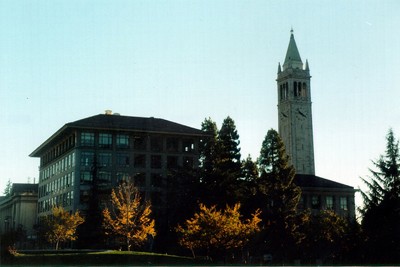Quantum Econodynamics and the Huckster-Orlon Theory of
international Trade
by
Selra H.C. Newrad
 As most readers know, according to classical Huckster-Orlon (H-O) theory, if the
ratio of hucksters to orlon in the U.S. exceeds this ratio elsewhere in the
world, the U.S. should be exporting hucksters and importing orlon so consumers
everywhere will attain utility maxima [i.e. get more bang for their bucks].
As most readers know, according to classical Huckster-Orlon (H-O) theory, if the
ratio of hucksters to orlon in the U.S. exceeds this ratio elsewhere in the
world, the U.S. should be exporting hucksters and importing orlon so consumers
everywhere will attain utility maxima [i.e. get more bang for their bucks].
Unfortunately, countries whose citizens are
similar with respect to income, tastes, and skills - in particular, the leading
industrialized nations - want to trade the same kinds of things. That is, everyone wants to trade hucksters
for orlon irrespective of comparative advantage in these factors of production.
trade the same kinds of things. That is, everyone wants to trade hucksters
for orlon irrespective of comparative advantage in these factors of production.
This has completely upset international trade
theory and has resulted in an enormous trade deficit for the United States; we
have experienced an influx of hucksters despite an initial, relative abundance
of this factor. Consequently, imports in orlon have fallen to historic
lows: consumers are having to settle for short-sleeved sweaters with half as
many ribs and socks one size smaller than they are accustomed to buying.
In order to export hucksters under these
conditions, it is necessary to create a complementary product or service which
is more desirable to consumers than the hucksters but which cannot be obtained
without them.  Automobile
tires, for example, are complementary to automobiles; it took an enterprising
economist to realize that if we could sell people cars, we could also sell them
tires. Clearly, without the automobile there would have been limited
demand for these tires. As everyone knows, an enormous American industry
arose in response to the need to create a market for automobile tires. So
it can be with American hucksters.
Automobile
tires, for example, are complementary to automobiles; it took an enterprising
economist to realize that if we could sell people cars, we could also sell them
tires. Clearly, without the automobile there would have been limited
demand for these tires. As everyone knows, an enormous American industry
arose in response to the need to create a market for automobile tires. So
it can be with American hucksters.
One obvious complement to hucksters is
California, or to be
more precise, pieces of California. The Japanese cannot undersell us here
since they don't have California (at least not yet). Furthermore, we can
restrict the wholesale supply of California pieces to our own hucksters.
or to be
more precise, pieces of California. The Japanese cannot undersell us here
since they don't have California (at least not yet). Furthermore, we can
restrict the wholesale supply of California pieces to our own hucksters.
Surely, there are millions, if not billions,
of Brazilians, Canadians, Italians, and Russians who would shell out a dollar or
so to own a genuine piece of California. A few years ago our hucksters
succeeded in unloading pet rocks on the U.S. populace at $5 a pop; now they can
expand on this concept as well as the market: take an authentic "mineral
deposit" from the Mother Lode, throw in a map showing its original location and a "deed" to it and
the rest of the world will be begging (especially if we see to that local demand
cannot be met; there is nothing like a shortage to whet the appetite).
throw in a map showing its original location and a "deed" to it and
the rest of the world will be begging (especially if we see to that local demand
cannot be met; there is nothing like a shortage to whet the appetite).
 Imagine, for instance, the typical Chinese worker, deprived of Disneyland, the
Napa Valley wine country, and a ninety-minute freeway commute, lording it over
his comrades with his piece of California. Naturally, it would be prudent
to select a variety of rock which, though abundant in California, is rare or
non-existent in the proposed market area The purchaser must feel - and his
friends must feel - that he possesses something unique, something of
value. And for those Marxists who insist their purchases have utility as
well, the rock can double as a paperweight or doorstop.
Imagine, for instance, the typical Chinese worker, deprived of Disneyland, the
Napa Valley wine country, and a ninety-minute freeway commute, lording it over
his comrades with his piece of California. Naturally, it would be prudent
to select a variety of rock which, though abundant in California, is rare or
non-existent in the proposed market area The purchaser must feel - and his
friends must feel - that he possesses something unique, something of
value. And for those Marxists who insist their purchases have utility as
well, the rock can double as a paperweight or doorstop.
 To ensure adequate sales we must, of course, export our hucksters along with the
rocks. Here, at last, is a product which is not labor-intensive (the
rocks, not the hucksters) and for which world demand can be met without
significantly diminishing a valuable, natural resource or cutting into domestic
consumption.
To ensure adequate sales we must, of course, export our hucksters along with the
rocks. Here, at last, is a product which is not labor-intensive (the
rocks, not the hucksters) and for which world demand can be met without
significantly diminishing a valuable, natural resource or cutting into domestic
consumption.
 We quantum econodynamicists may have our heads in the belfry of the ivory tower,
but our investment capital is firmly planted in the rock-solid, California
economy. Indeed, with minimum ingenuity, California and her hucksters can
be the "going thing."
We quantum econodynamicists may have our heads in the belfry of the ivory tower,
but our investment capital is firmly planted in the rock-solid, California
economy. Indeed, with minimum ingenuity, California and her hucksters can
be the "going thing."
The End